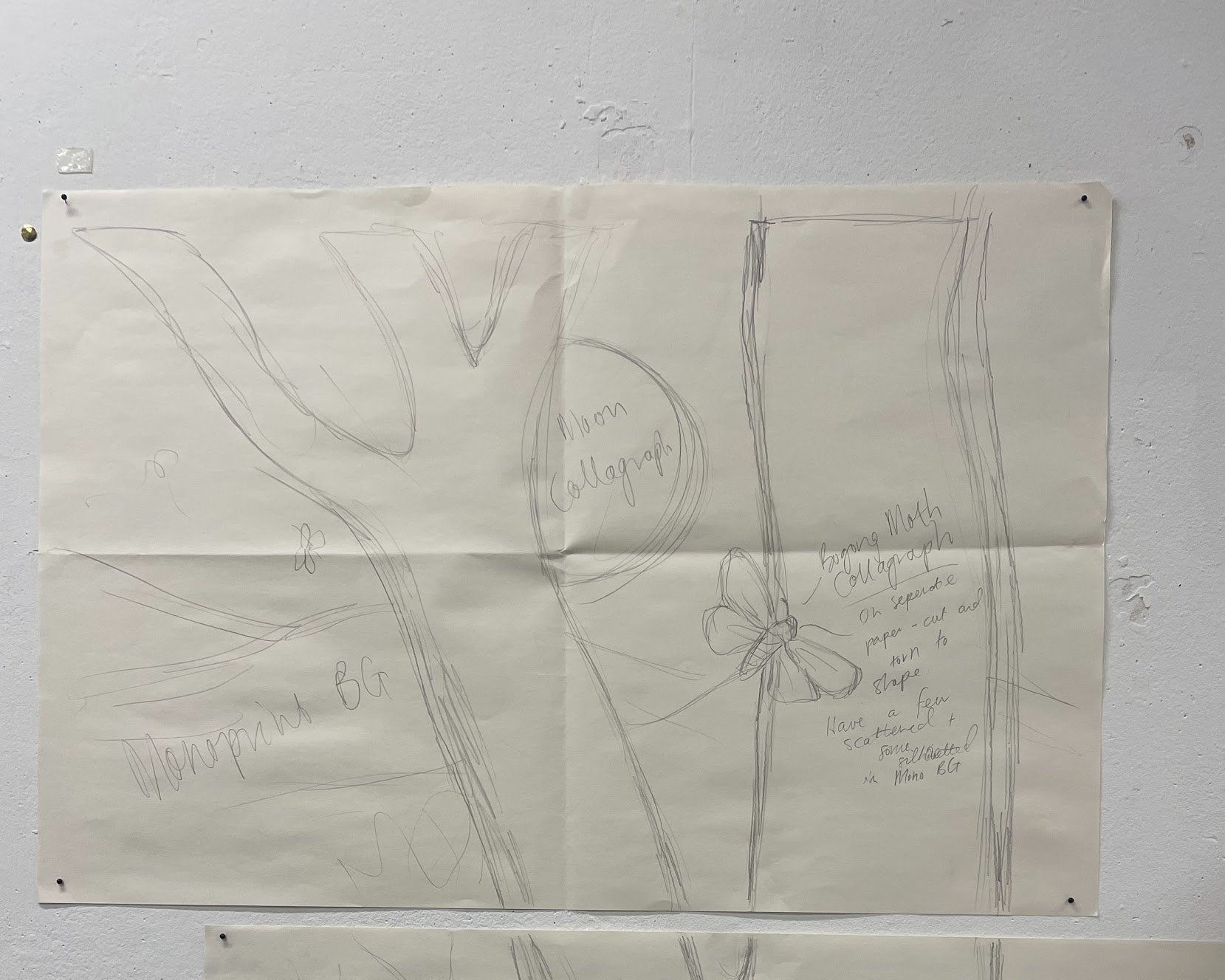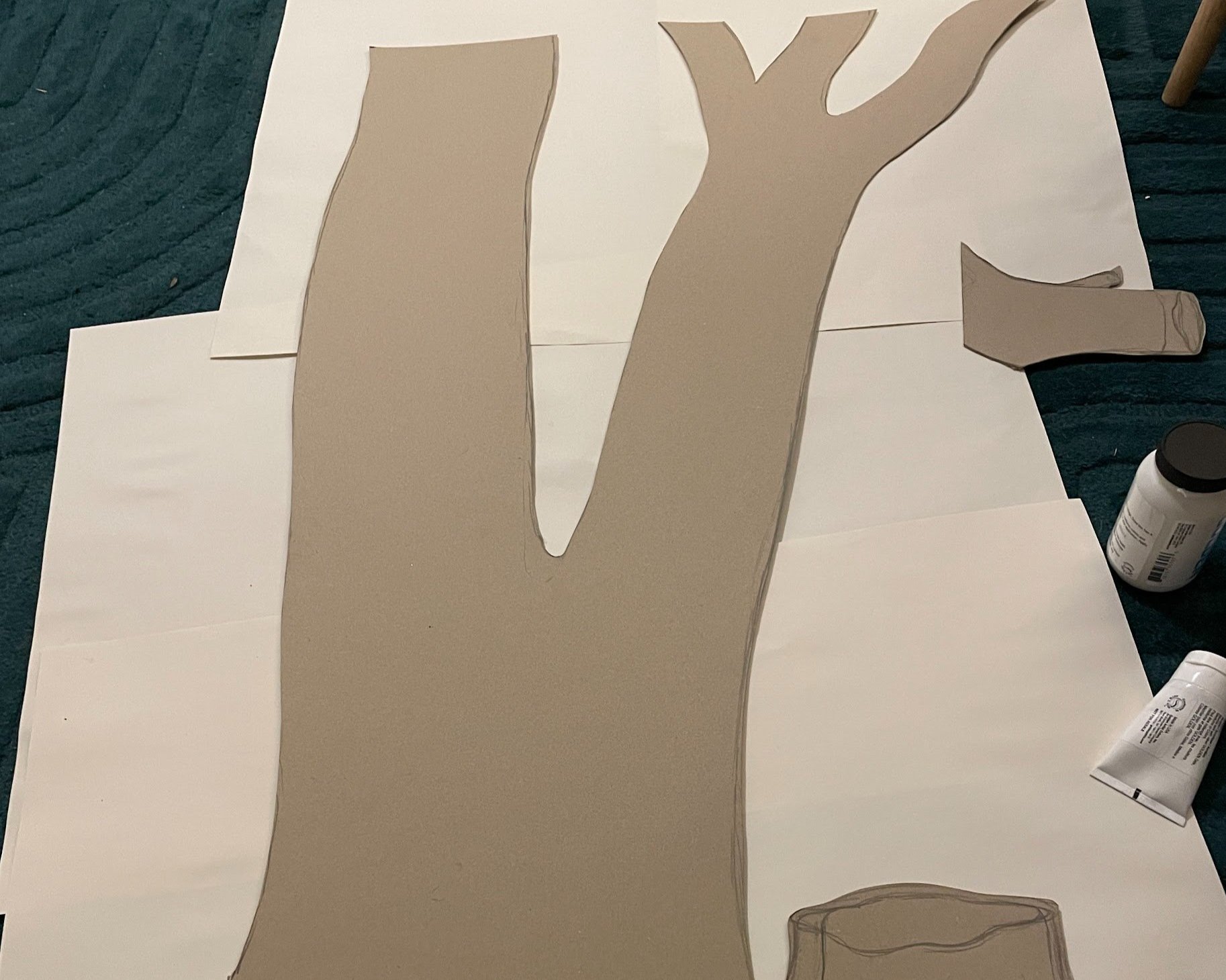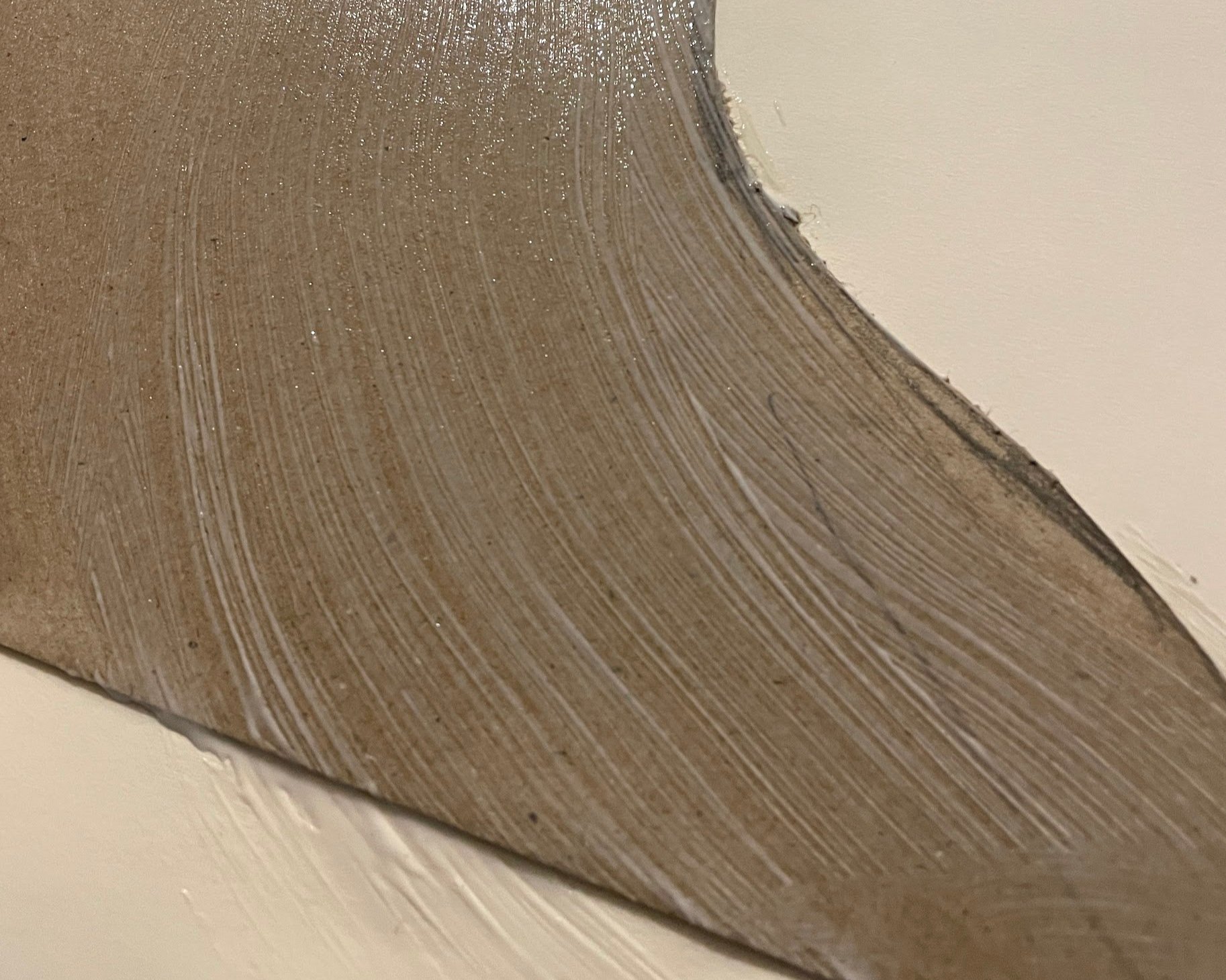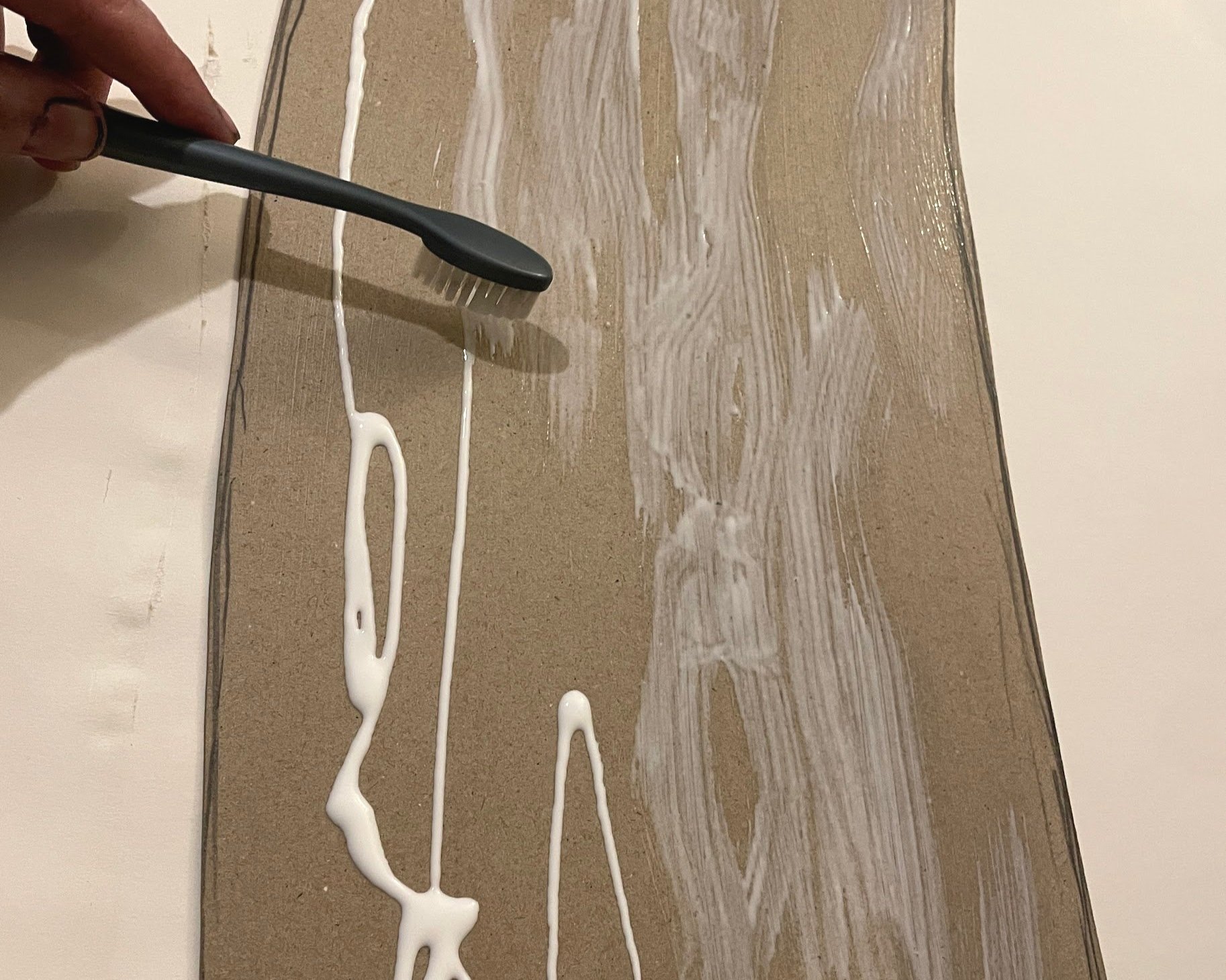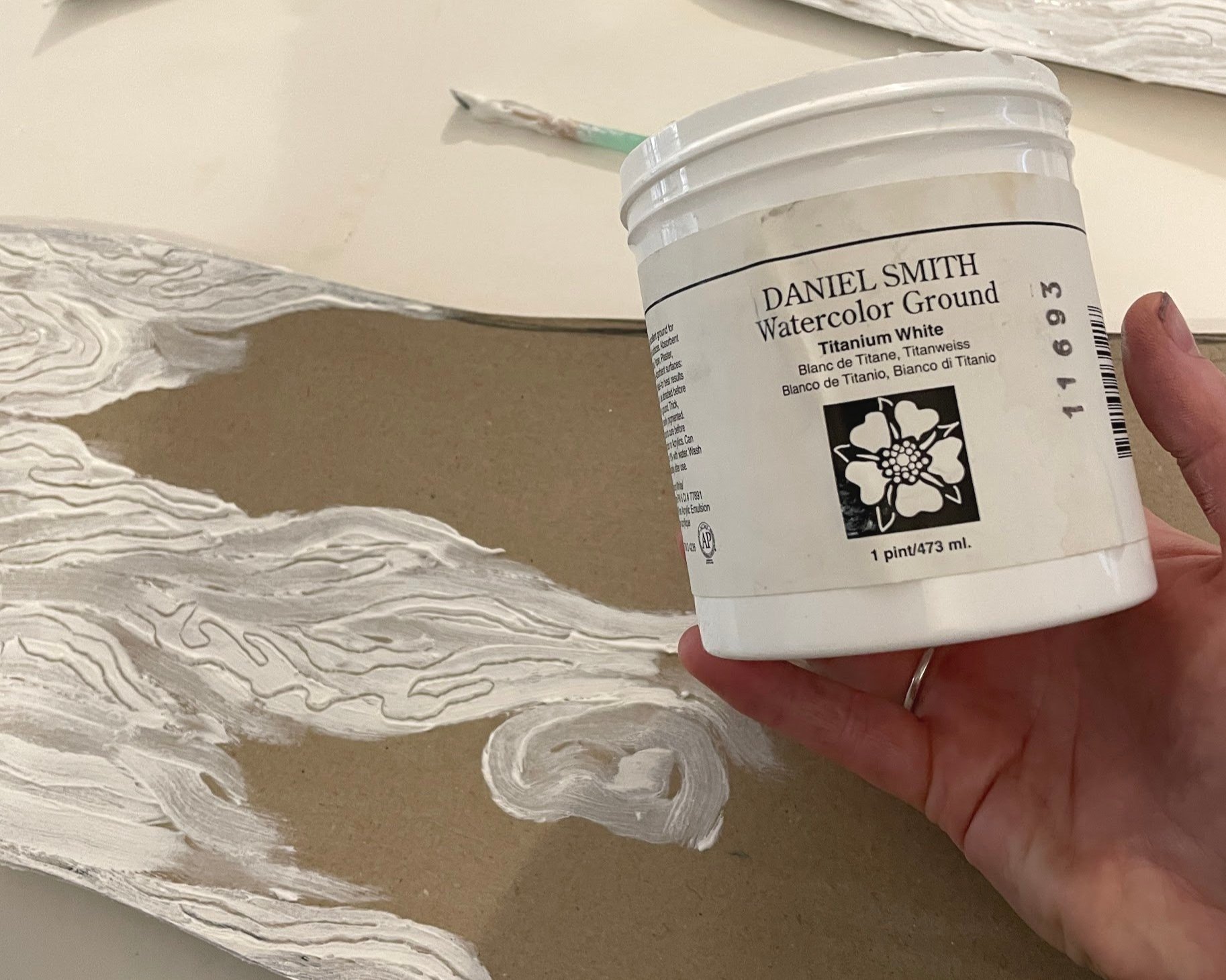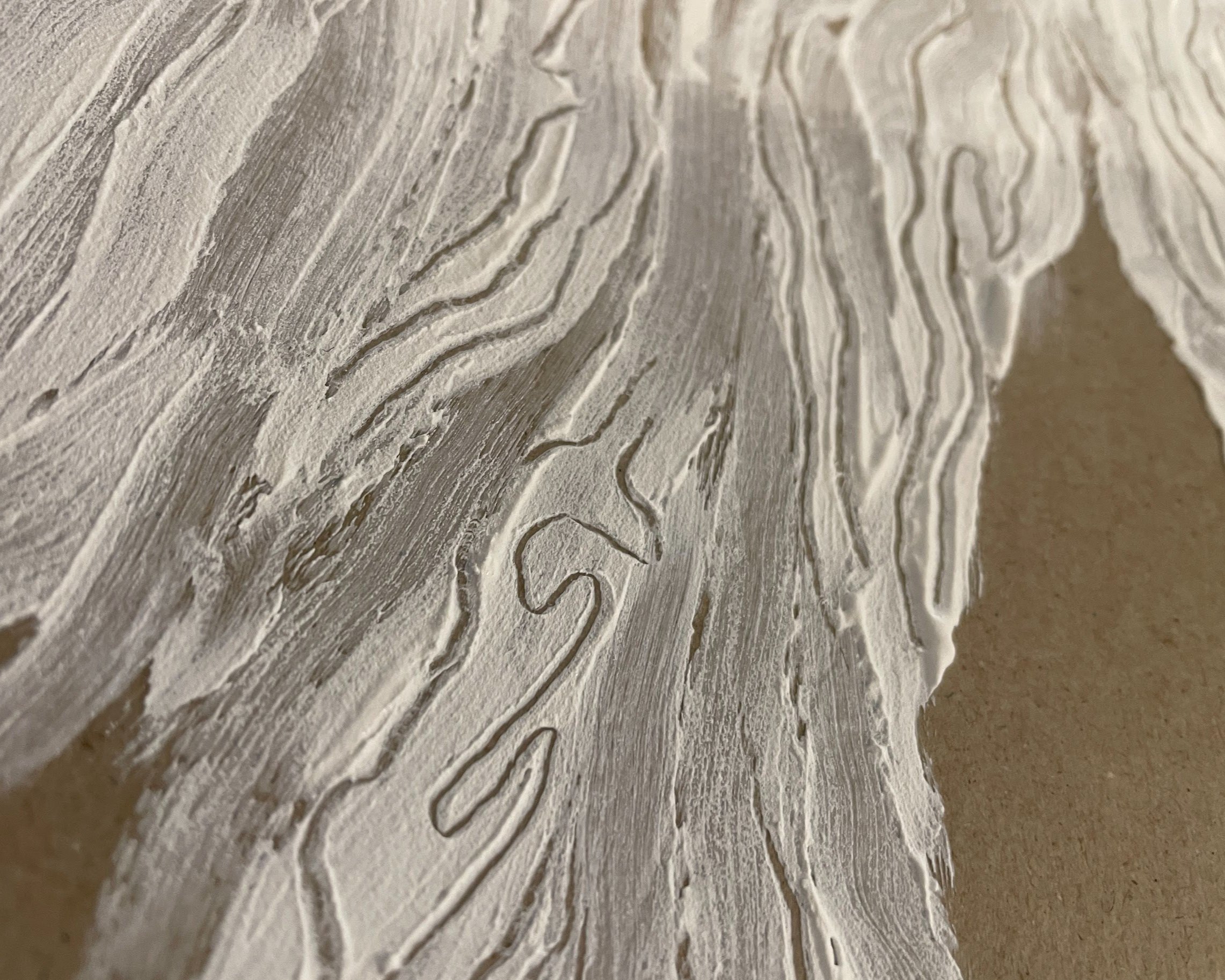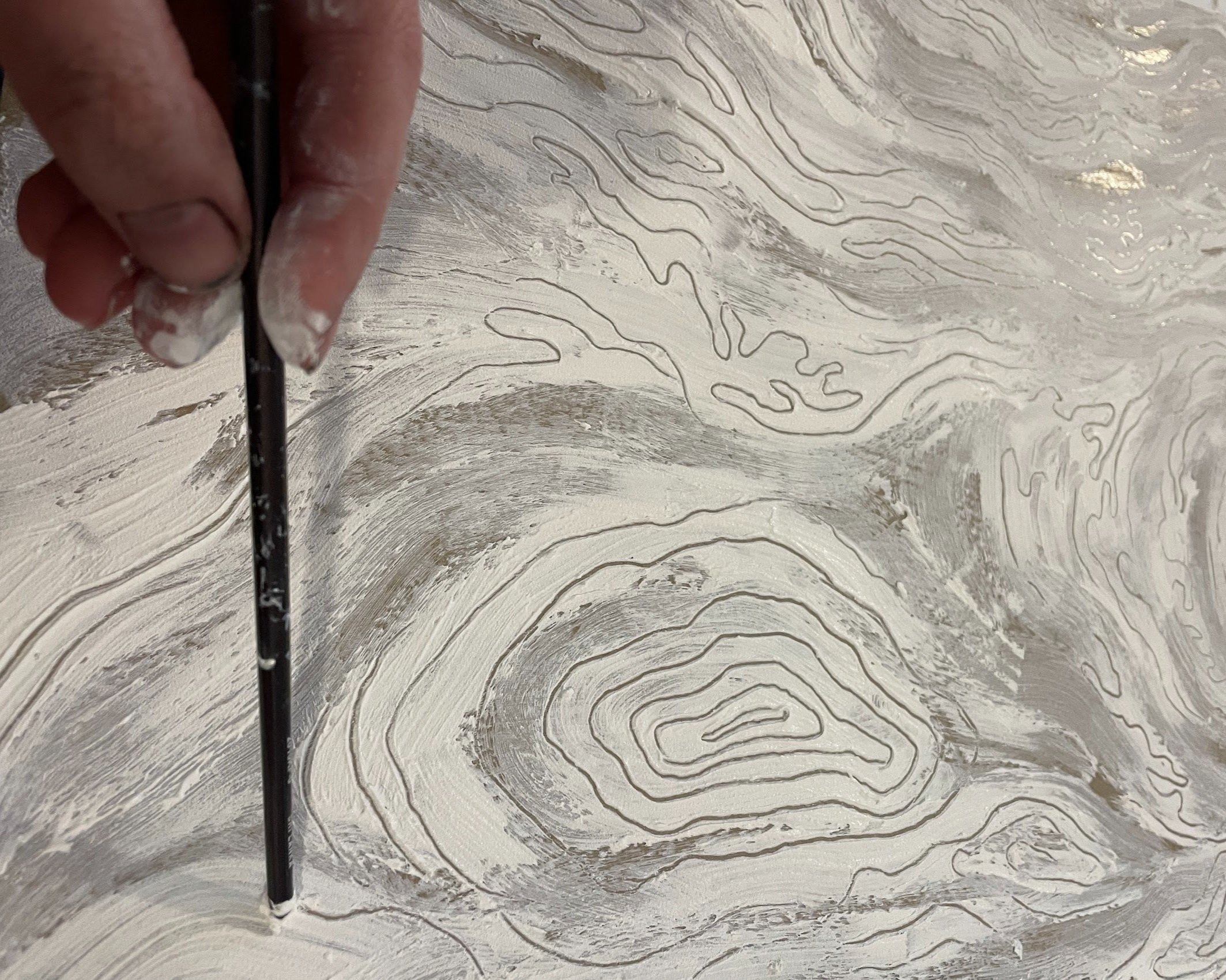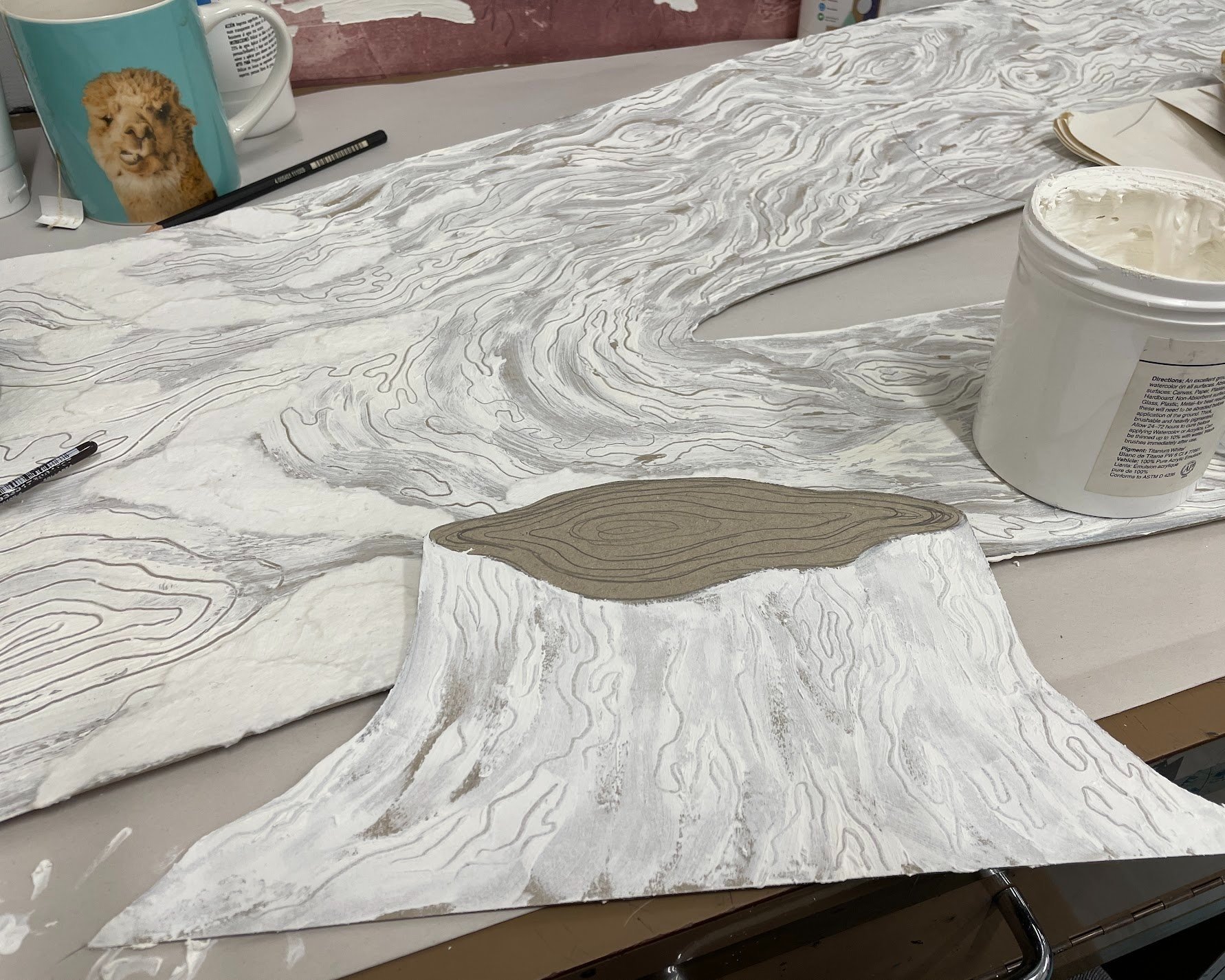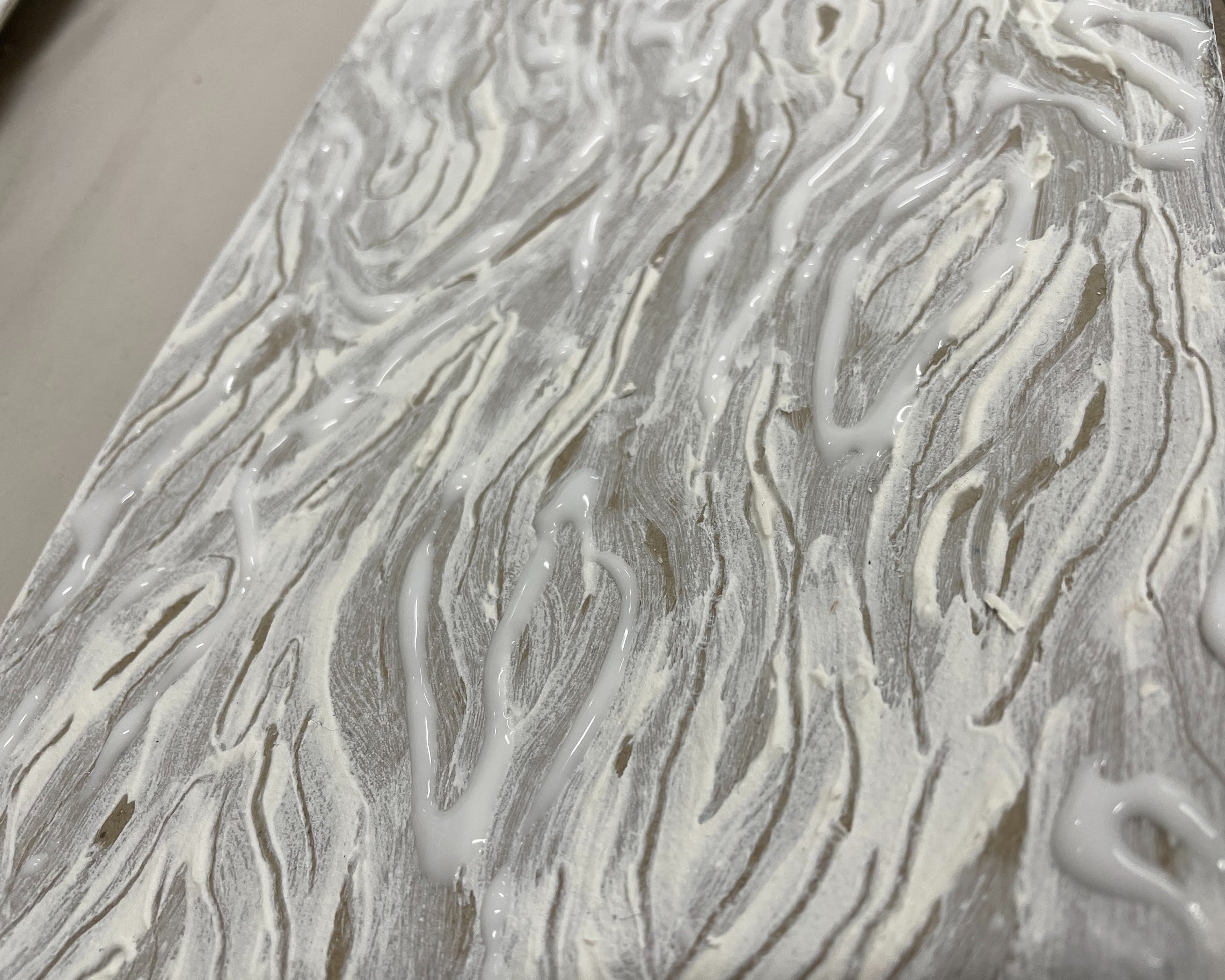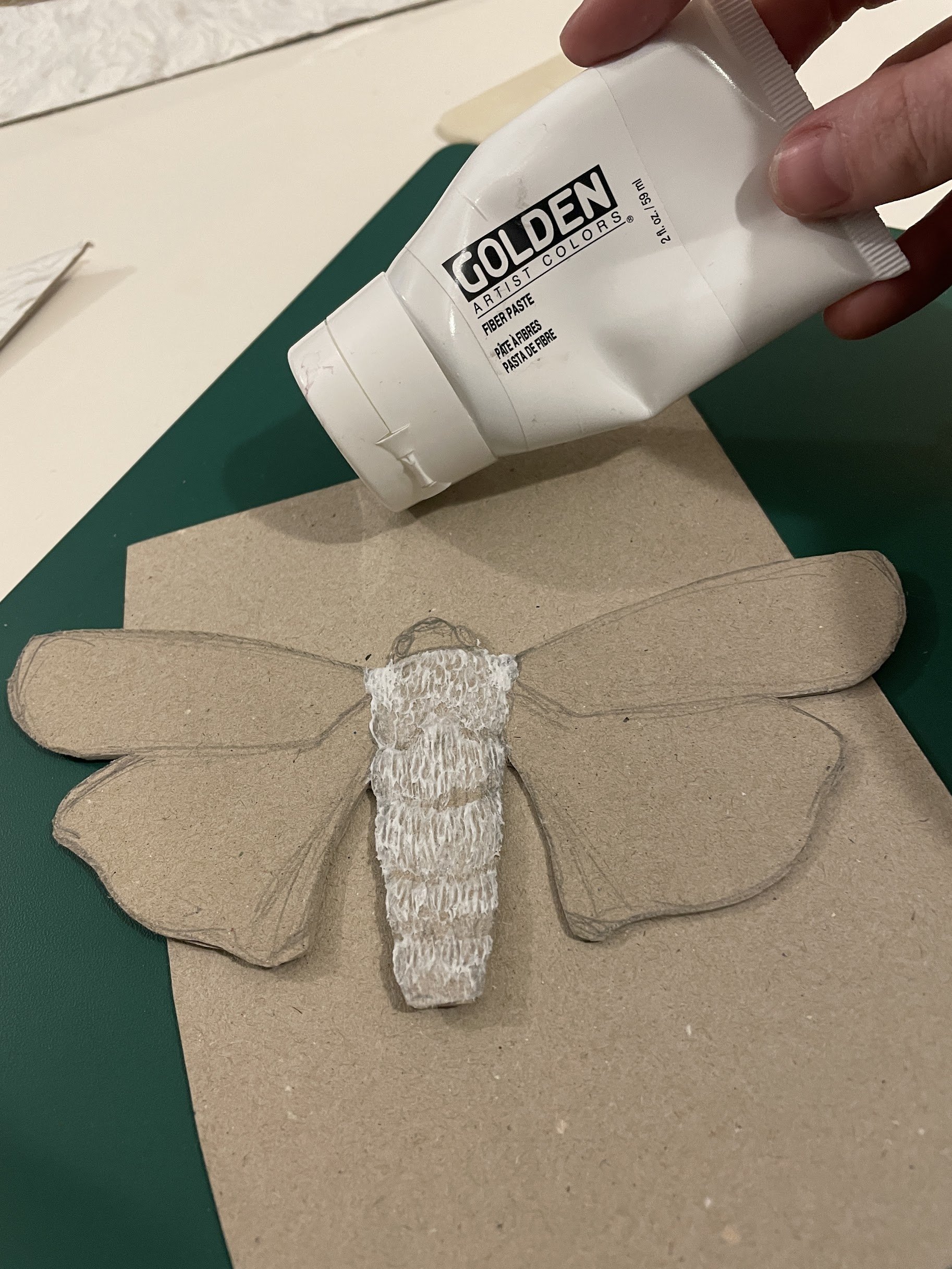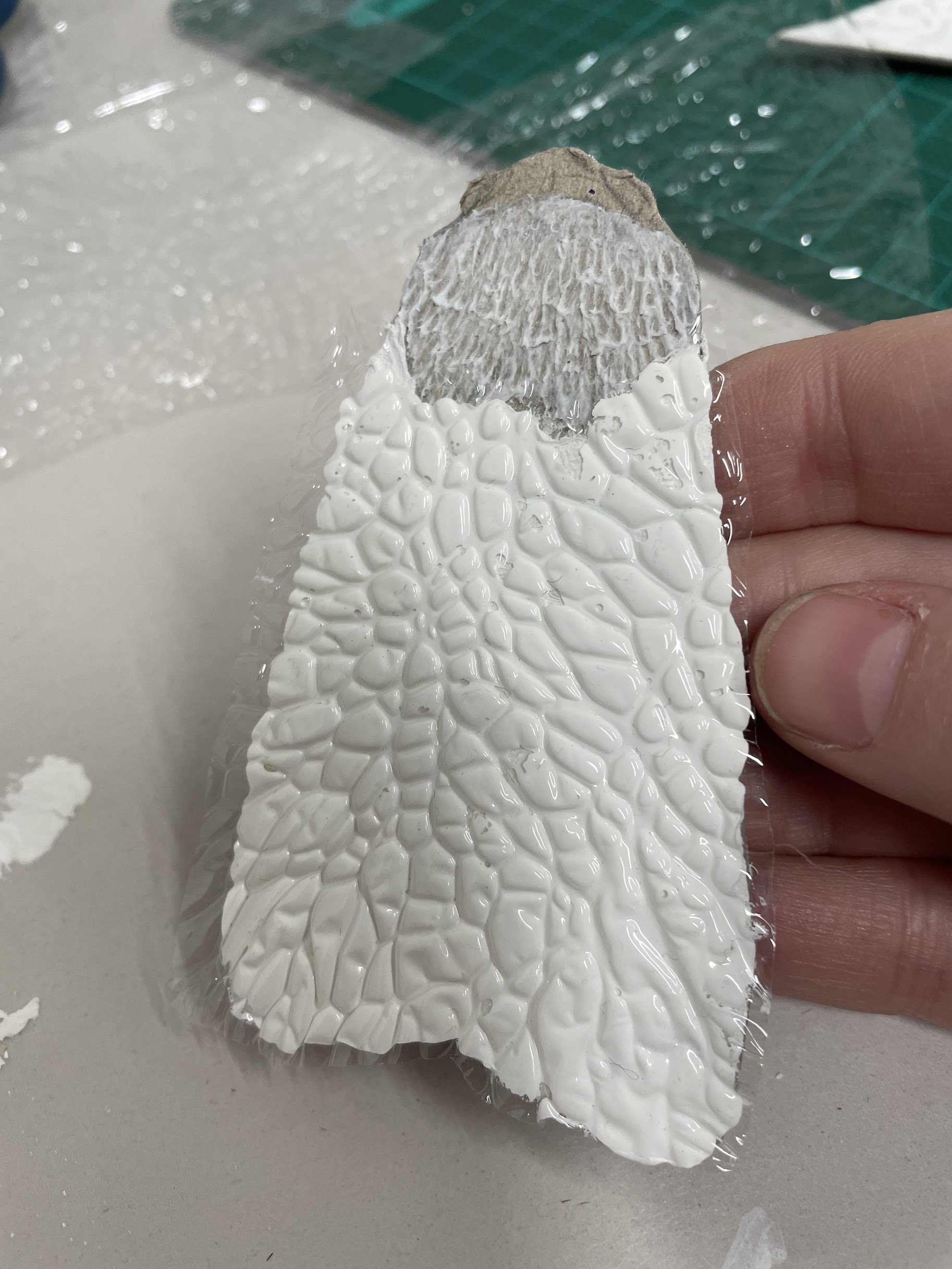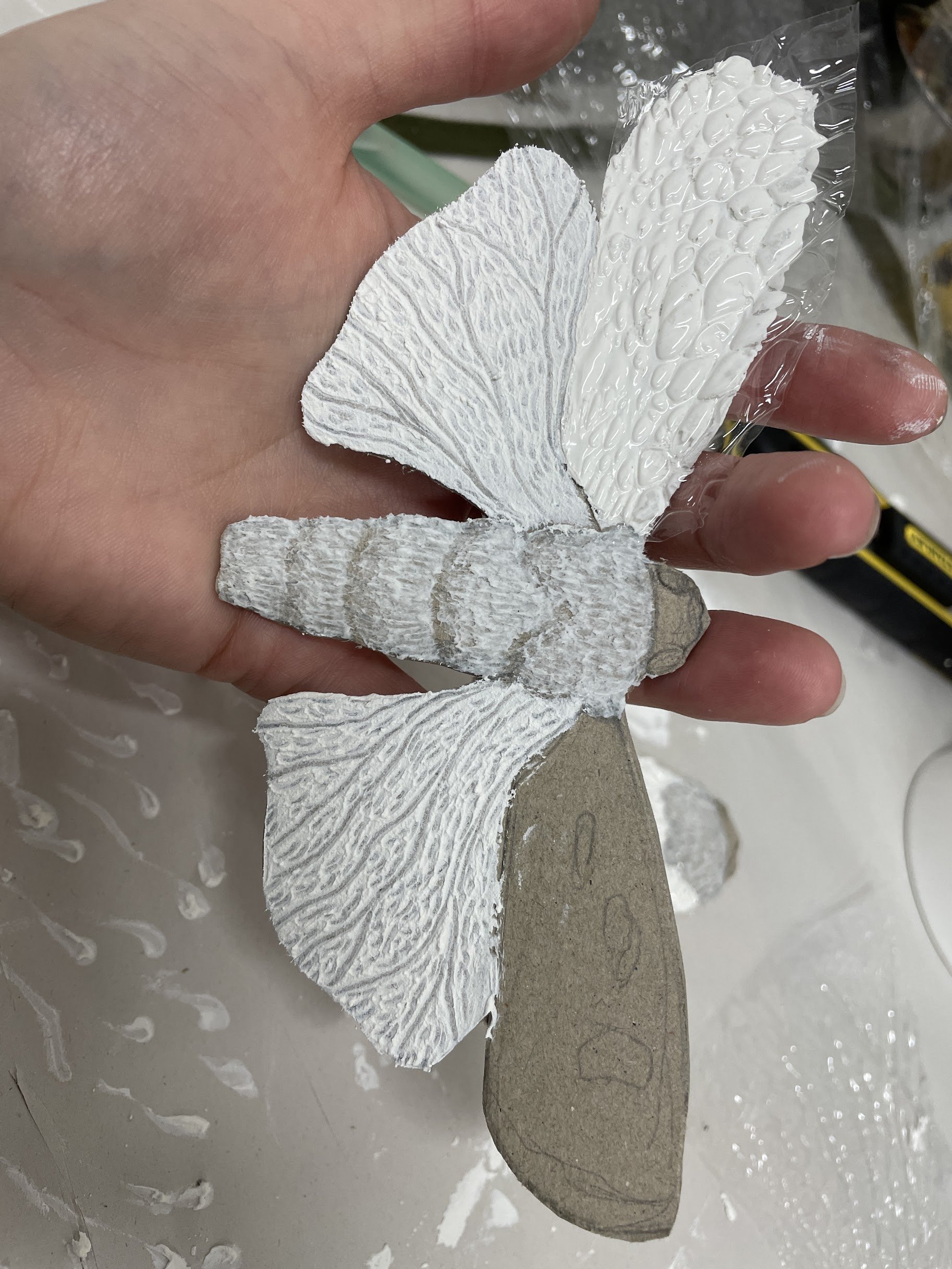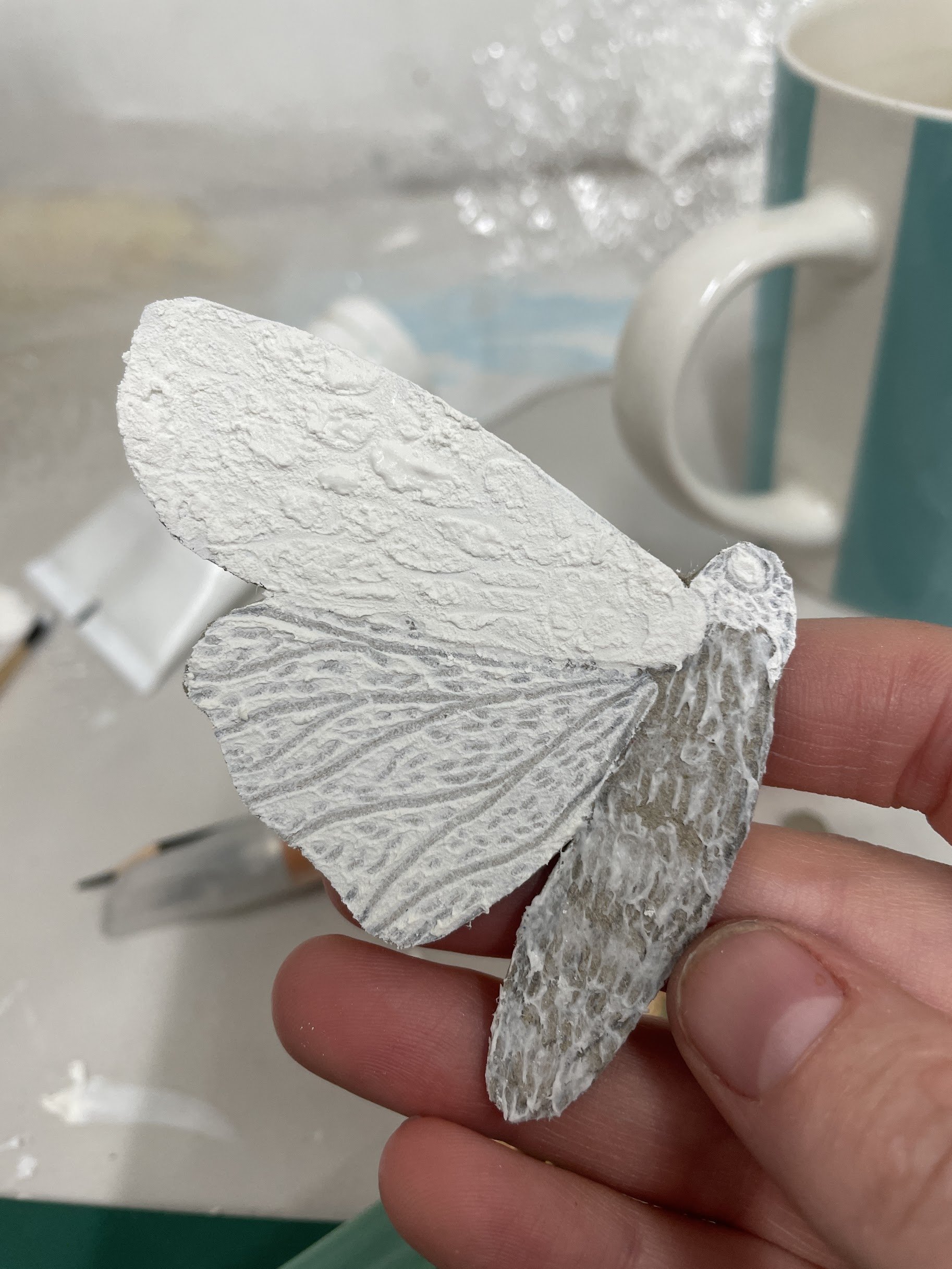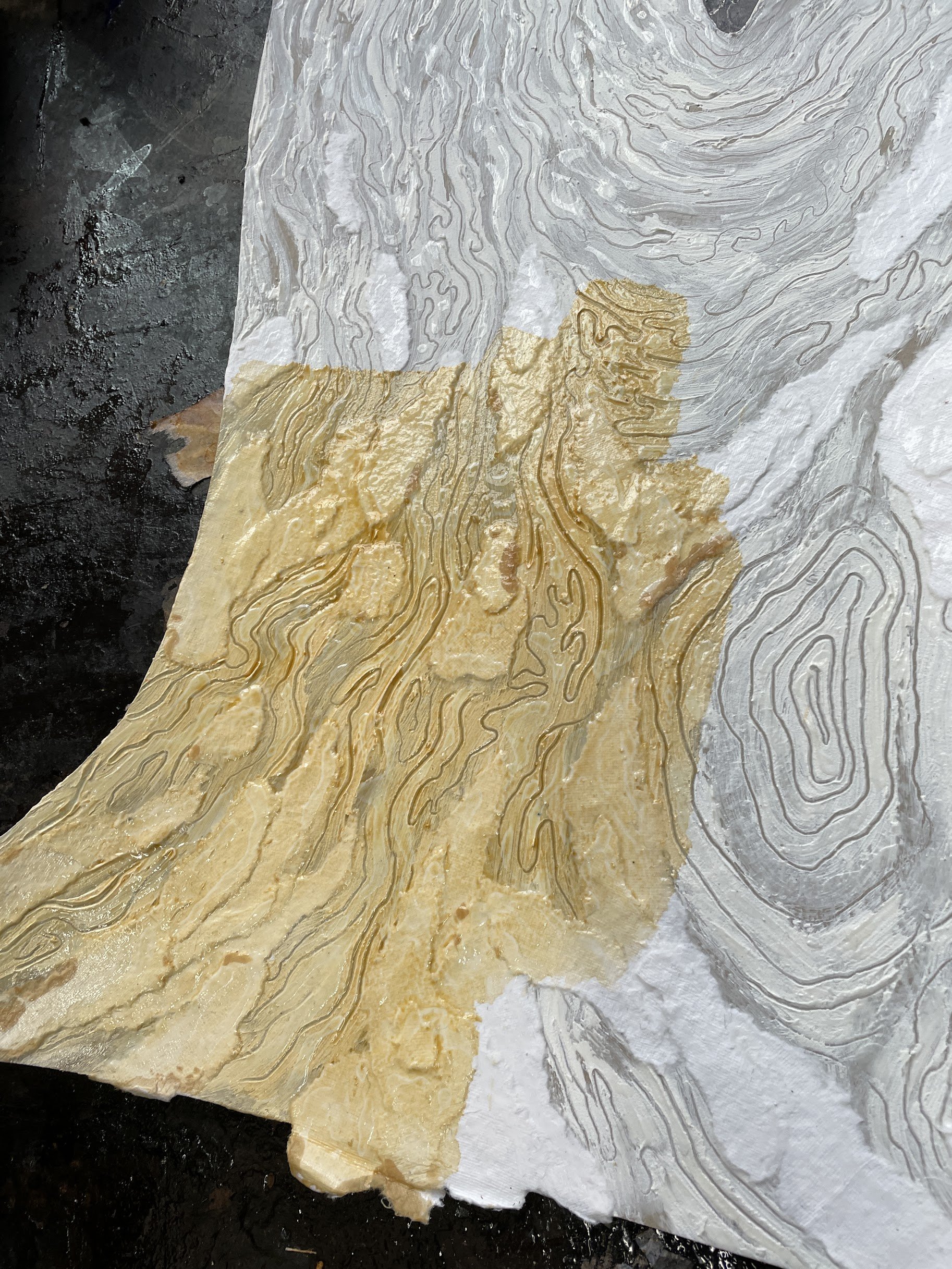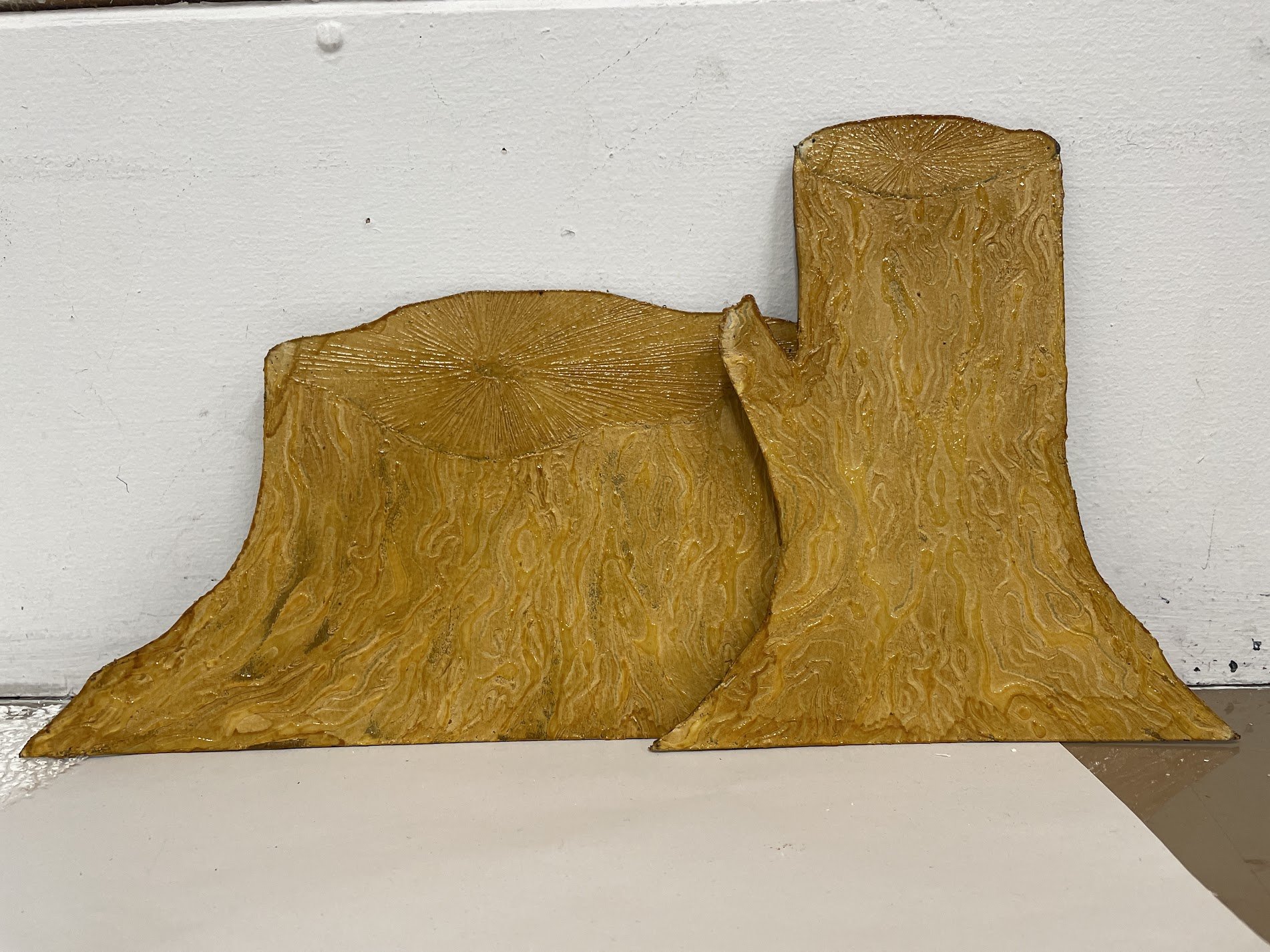6 Collagraph: Test printing + creating plates for resolved work
Part One: Test printing initial collagraph plates
I spent studio time over a couple of weeks testing some of my plate experiments to play around with colour application/mixing and wiping back methods to produce a variety of textures and tones, as well as ghost printing and rolling up my plates to print in relief.
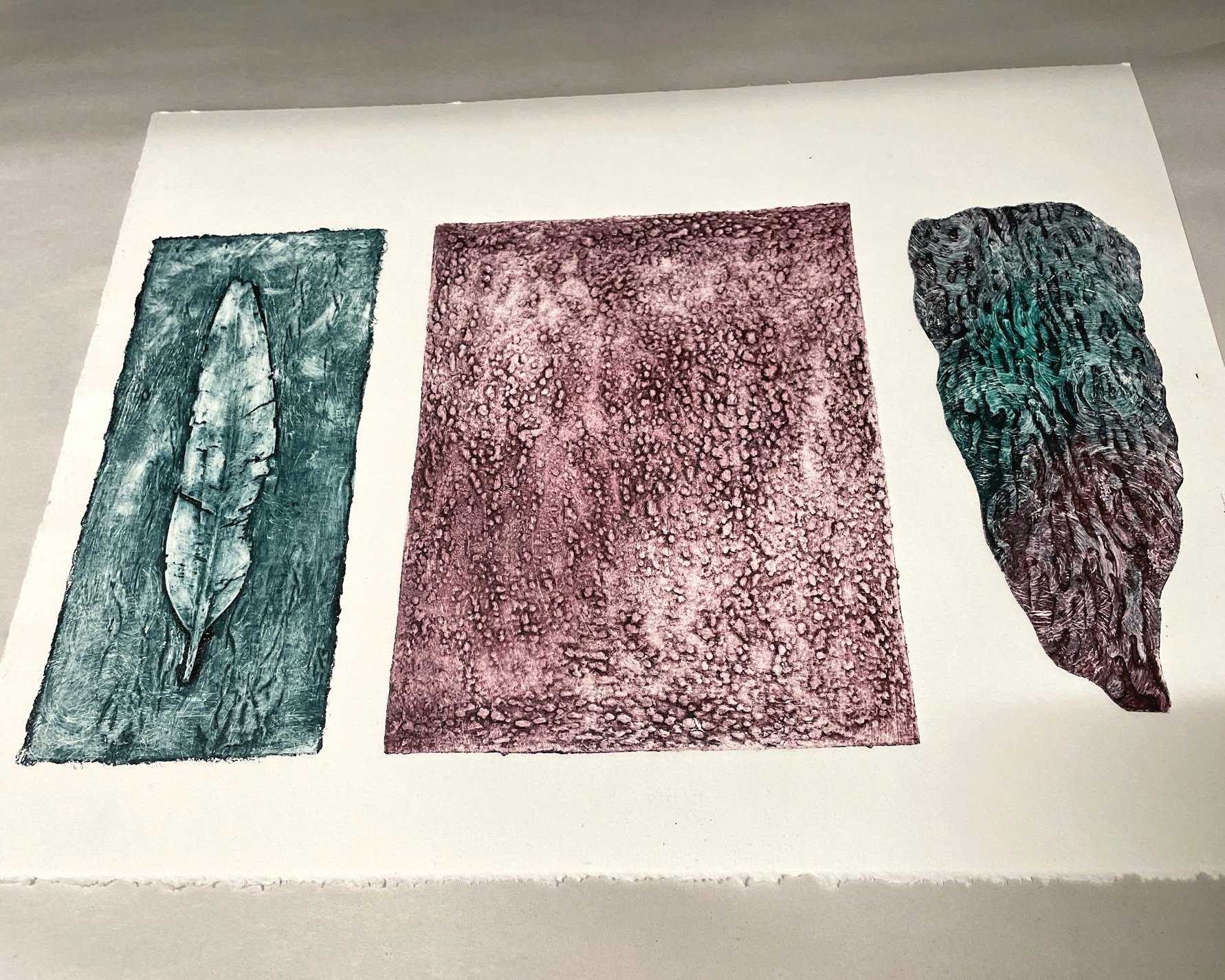
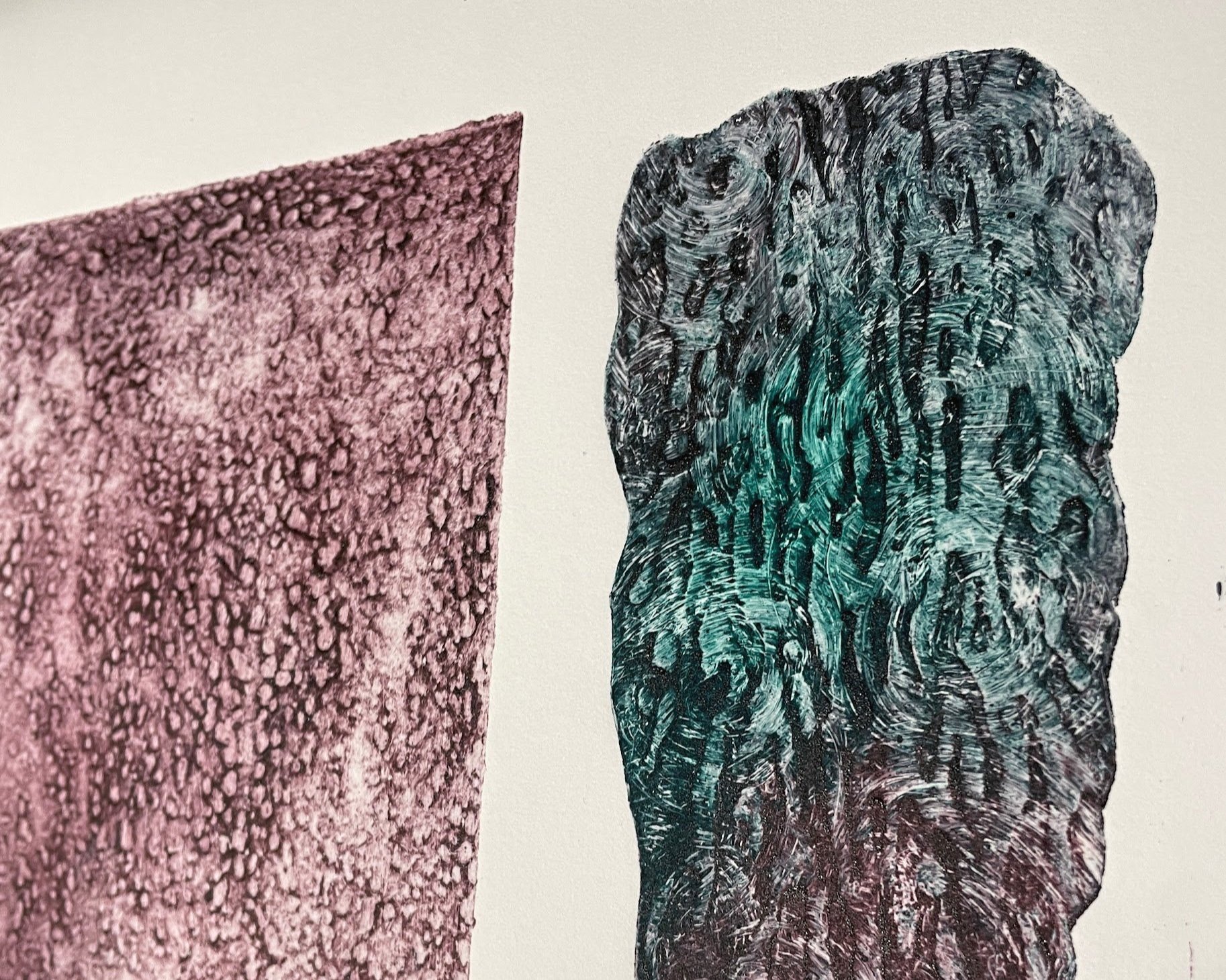
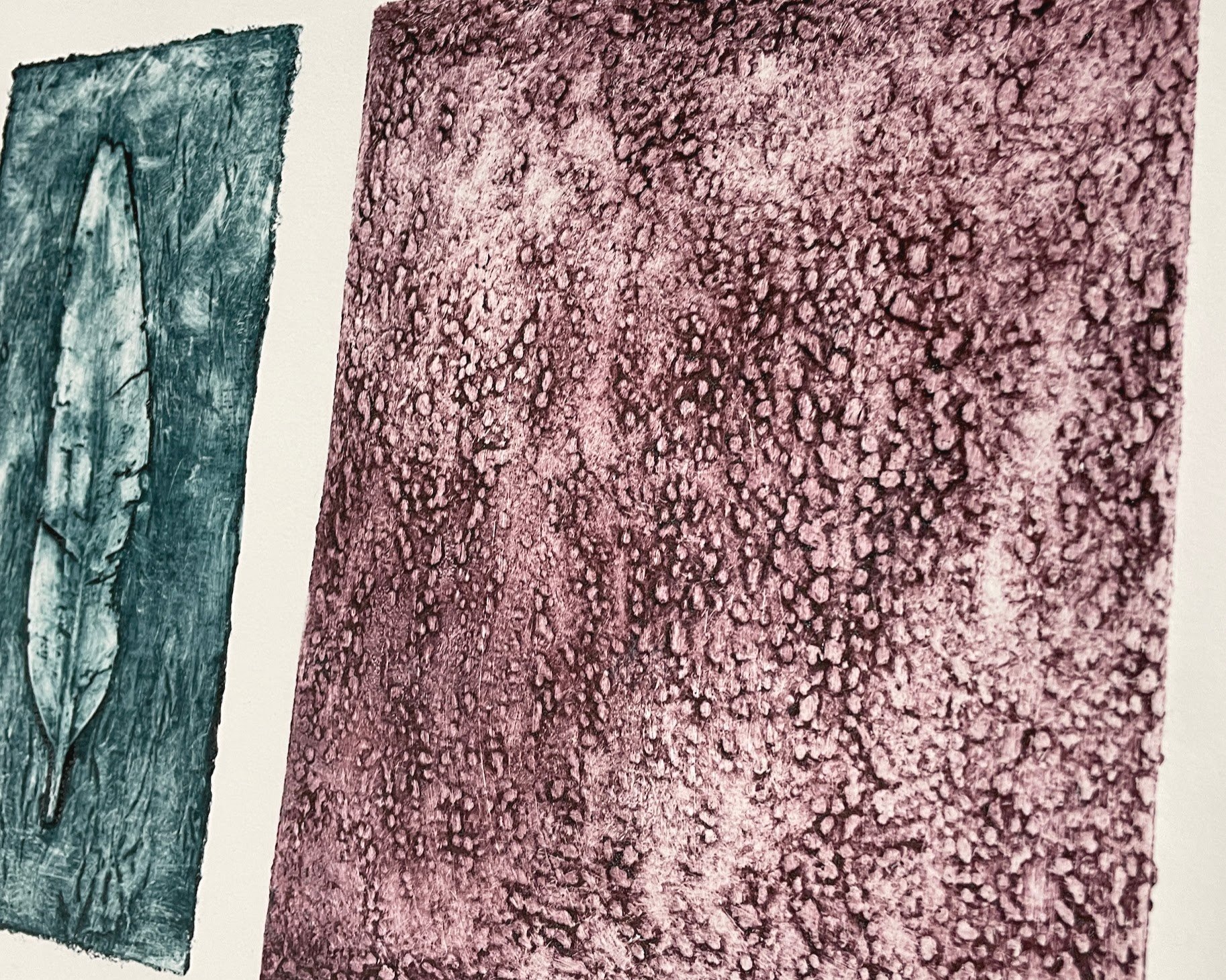
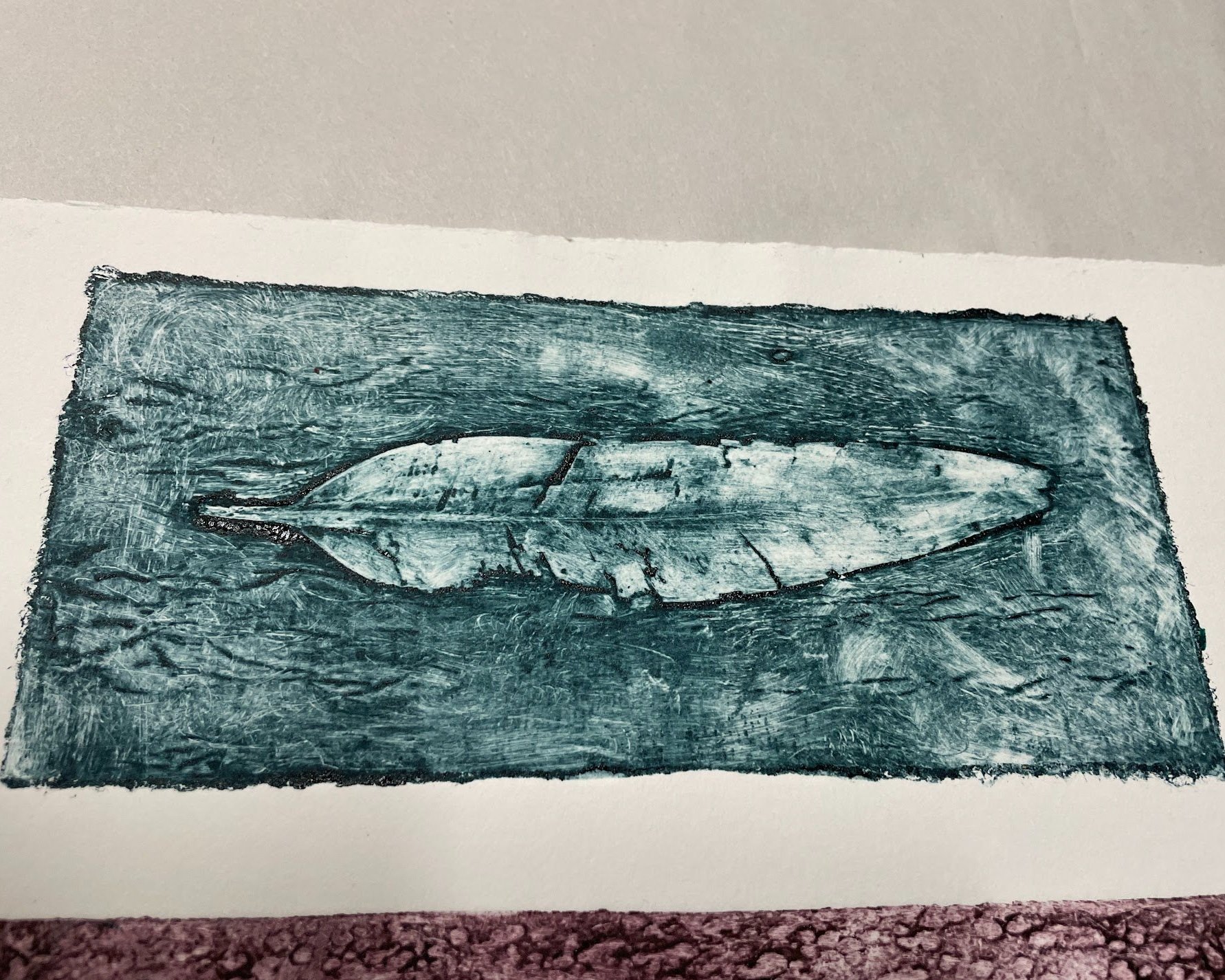
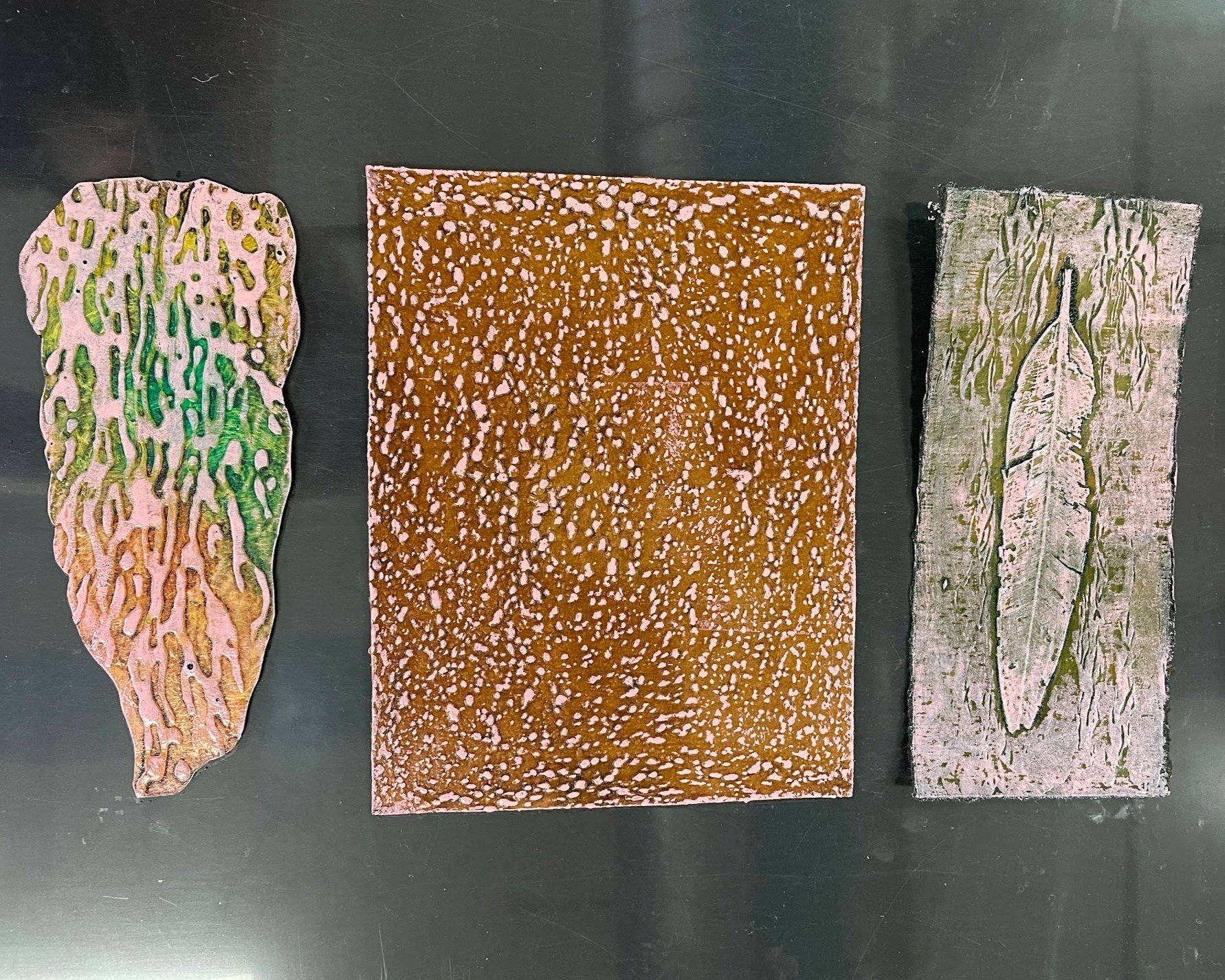
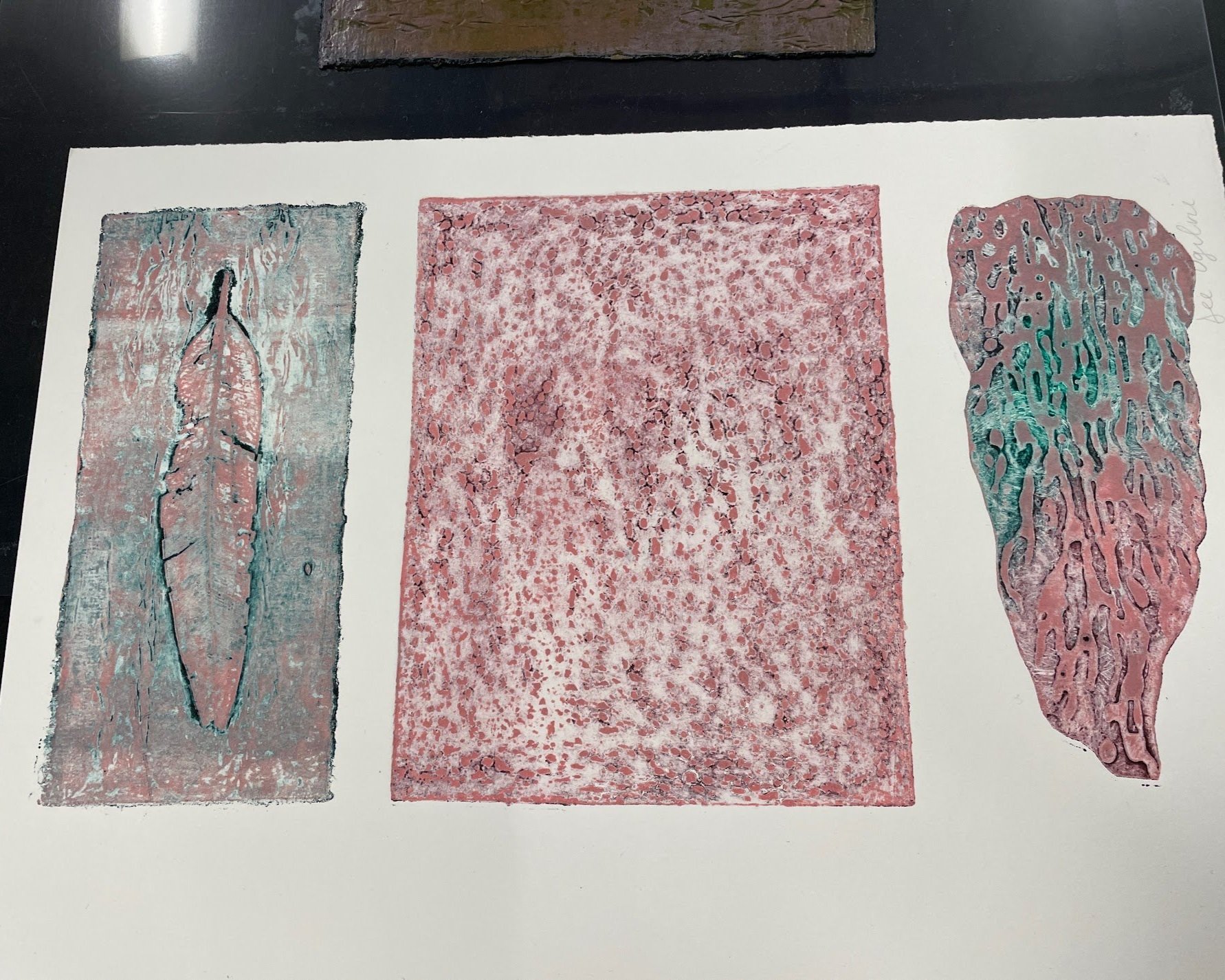
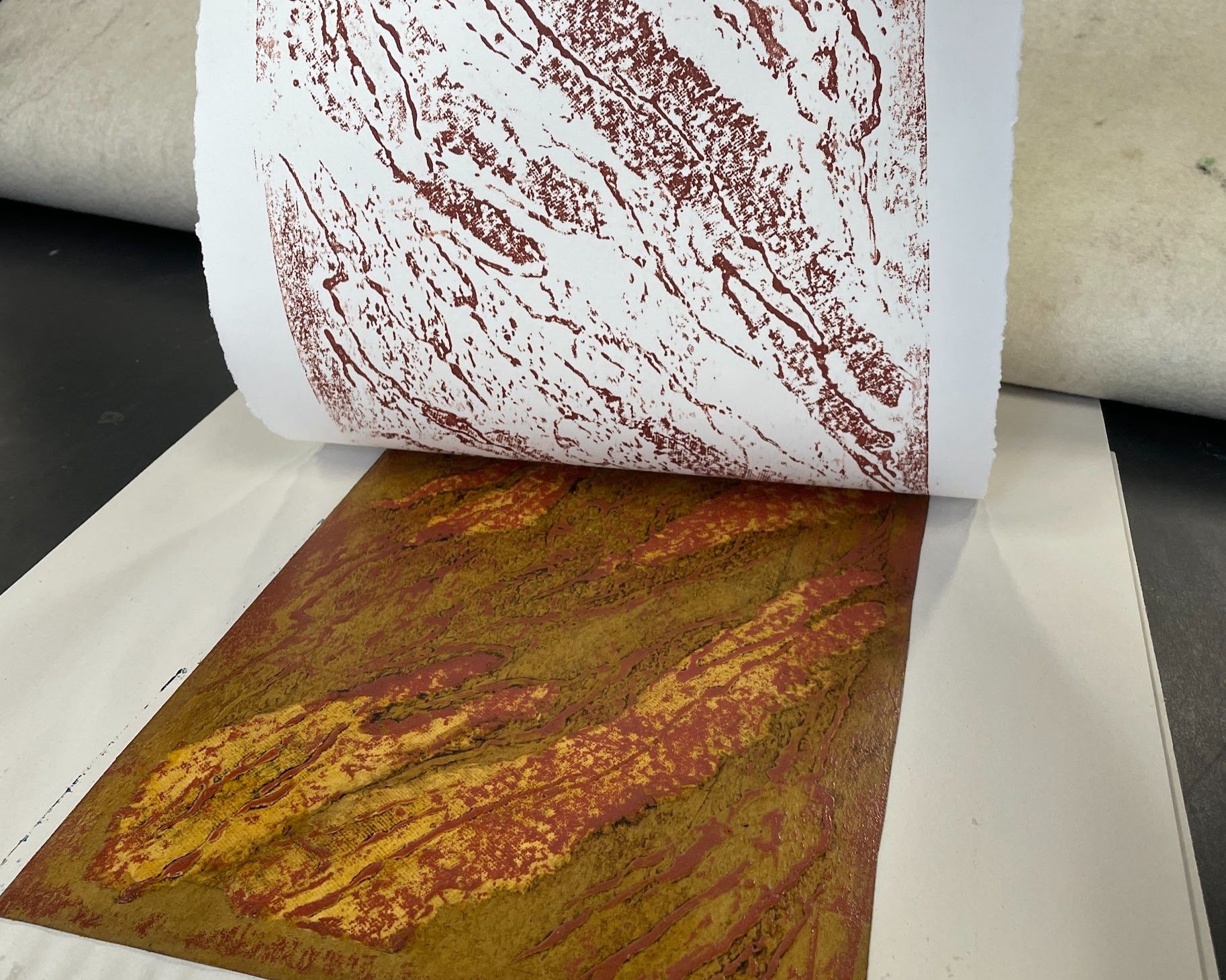
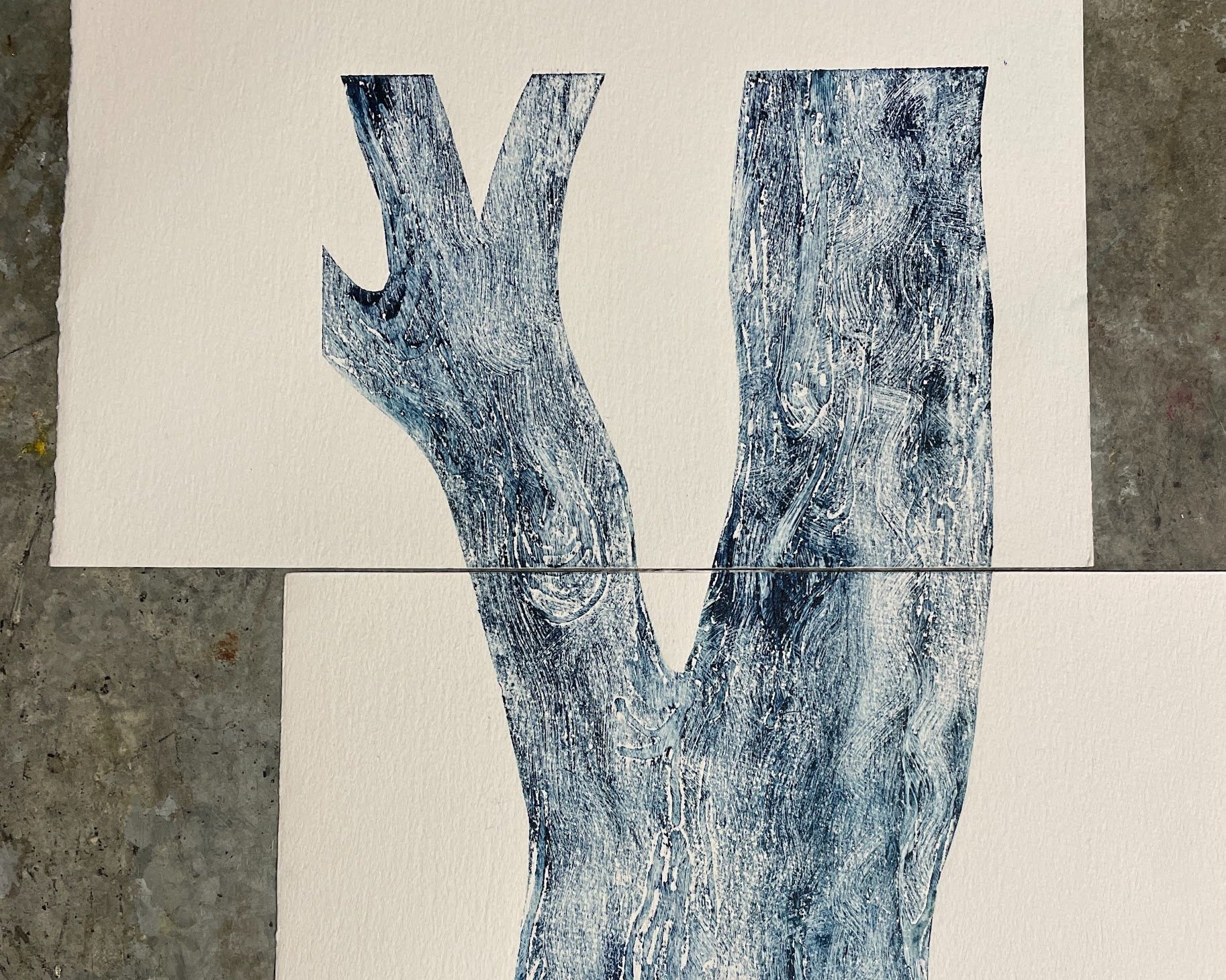
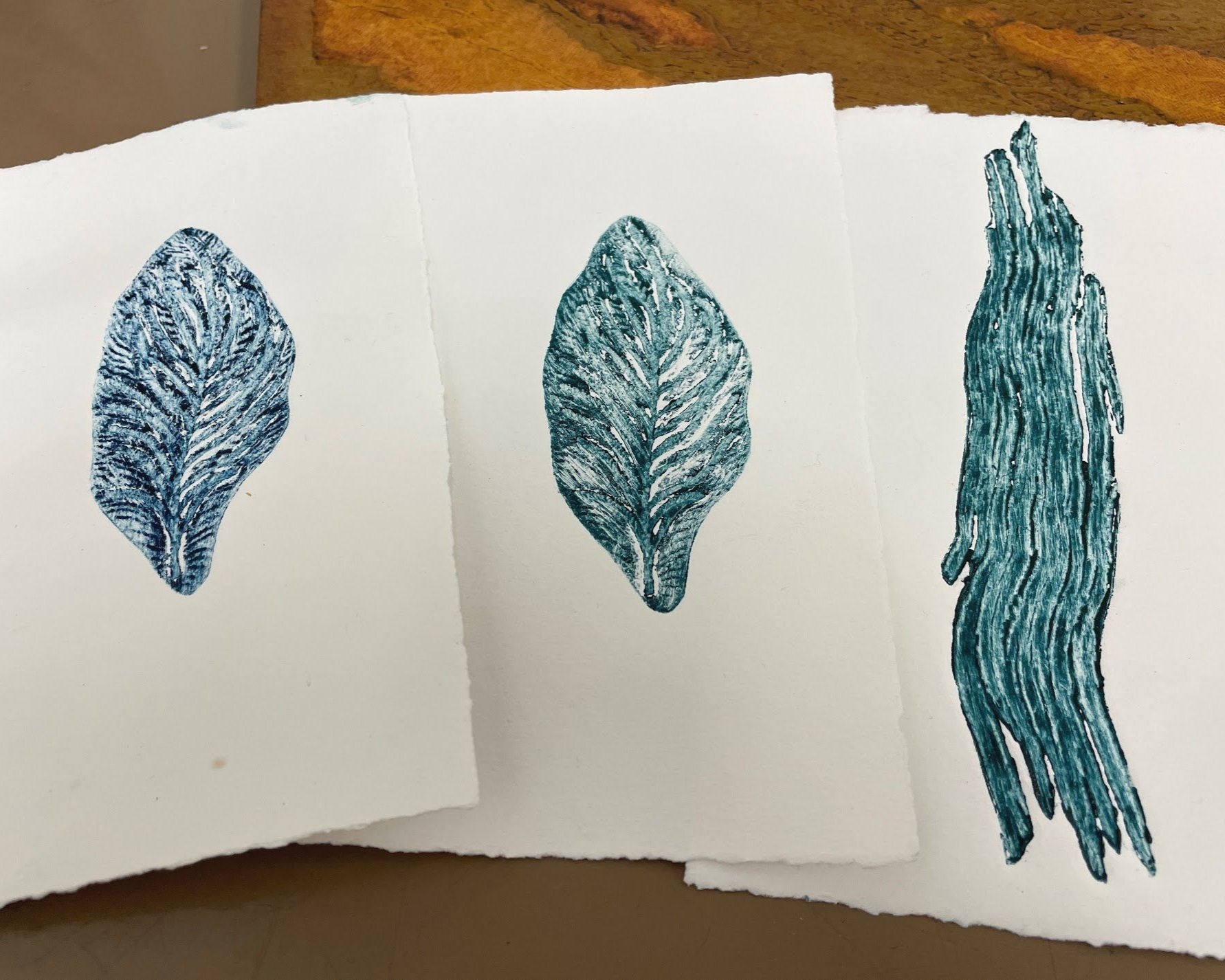
Part Two: Refining my concepts for the final work and playing with composition
After producing my small tree print the prior week, I began sketching compositions in my sketchbook, thinking about other ways to print a large scale version across multiple pieces of paper. My idea for the final prints was a night scene of deforested land with a lopped tree, stumps in the background and bogong moths flying through the scene - I wanted to capture my feelings about the environment and my concern for threatened native species and ecosystem collapse.
For me, the endangered bogong moth is a symbol for such loss. They are a night-flying moth, migrating to NSW/Vic alpine regions in the spring/summer where they are a major food source for the mountain pygmy possum, also an endangered species - the flow on effects of loss are represented by their connection. The dead trees + stumps represent human impact on the environment - there’s also a haunting beauty in dead trees - they remain as monument to the life they once lived, become homes to other living things, and will eventually break down to become nutrients for other plant life to continue the cycle, so represent a semblance of hope.
Below are my final composition sketches and processes for making the final collagraph plates.
